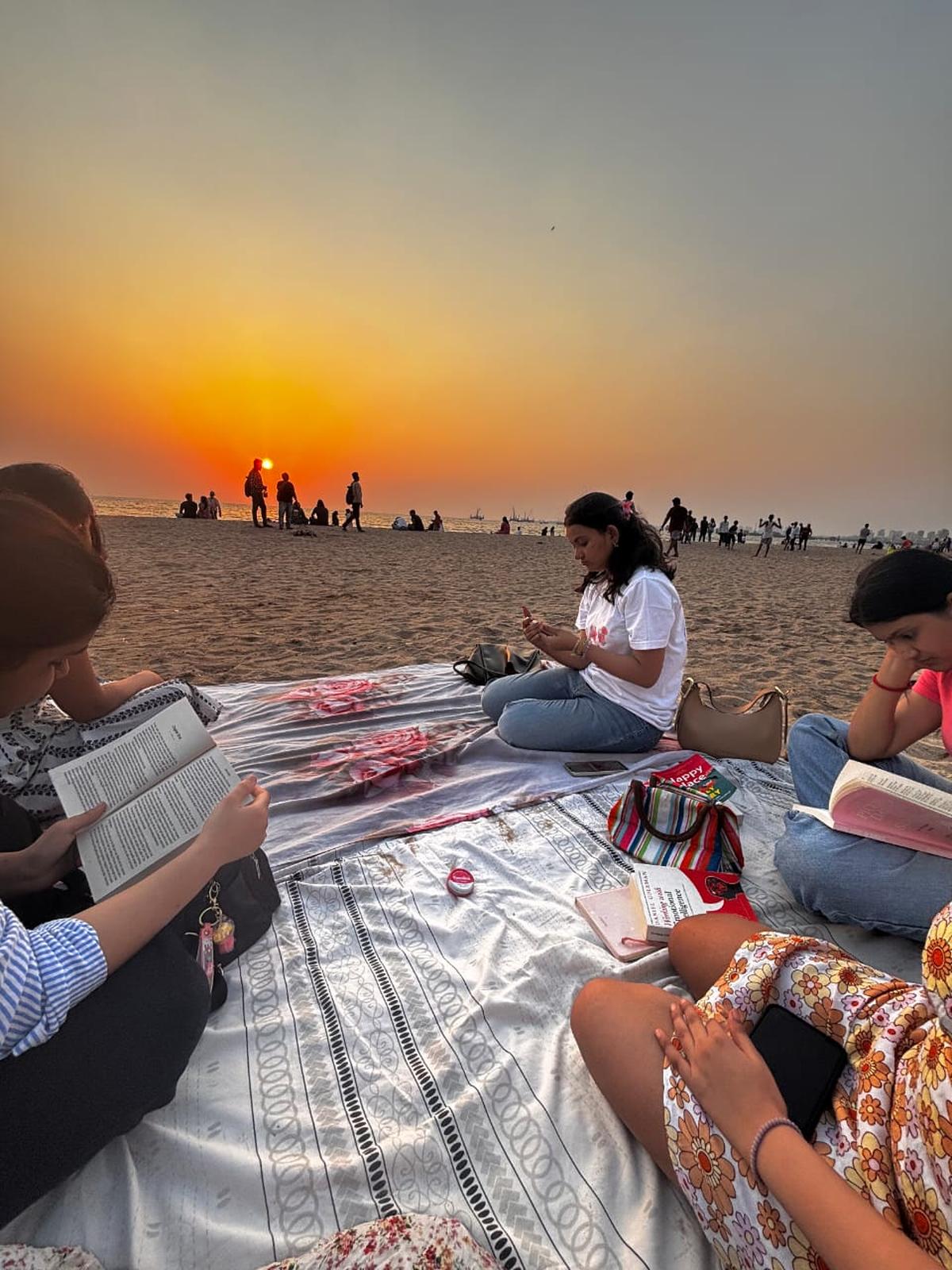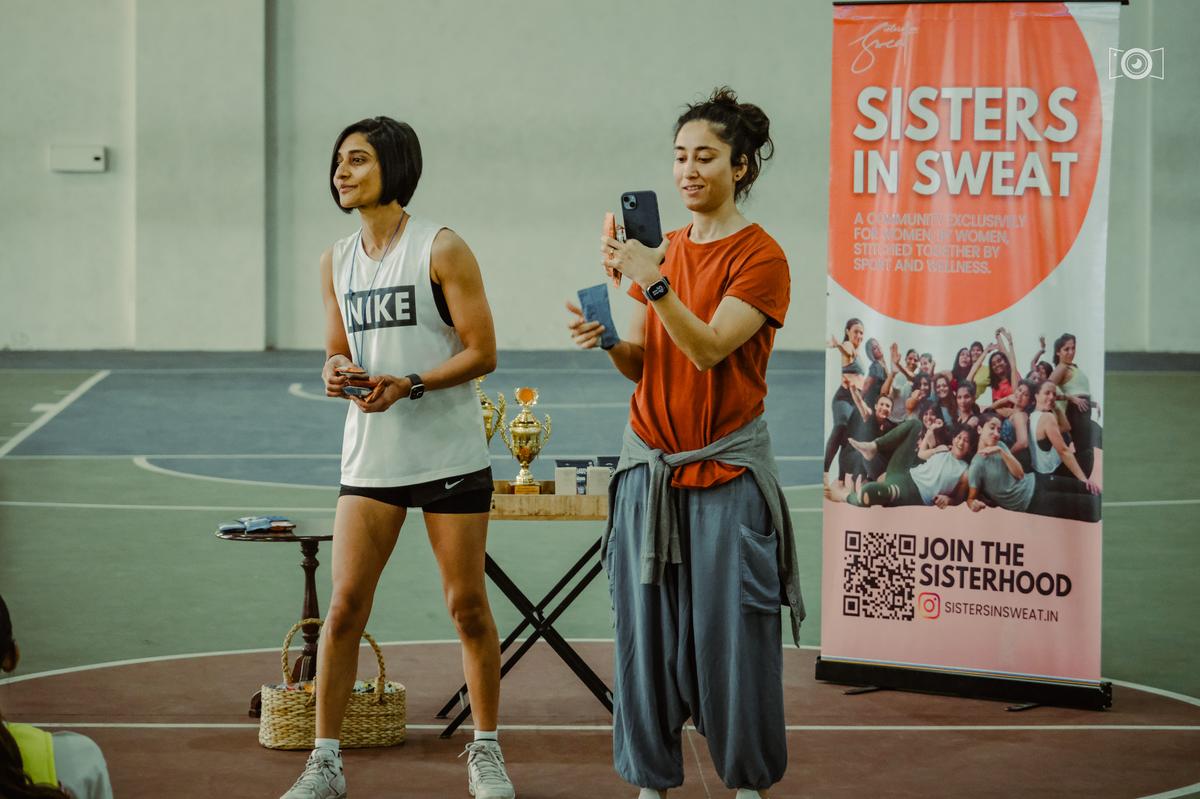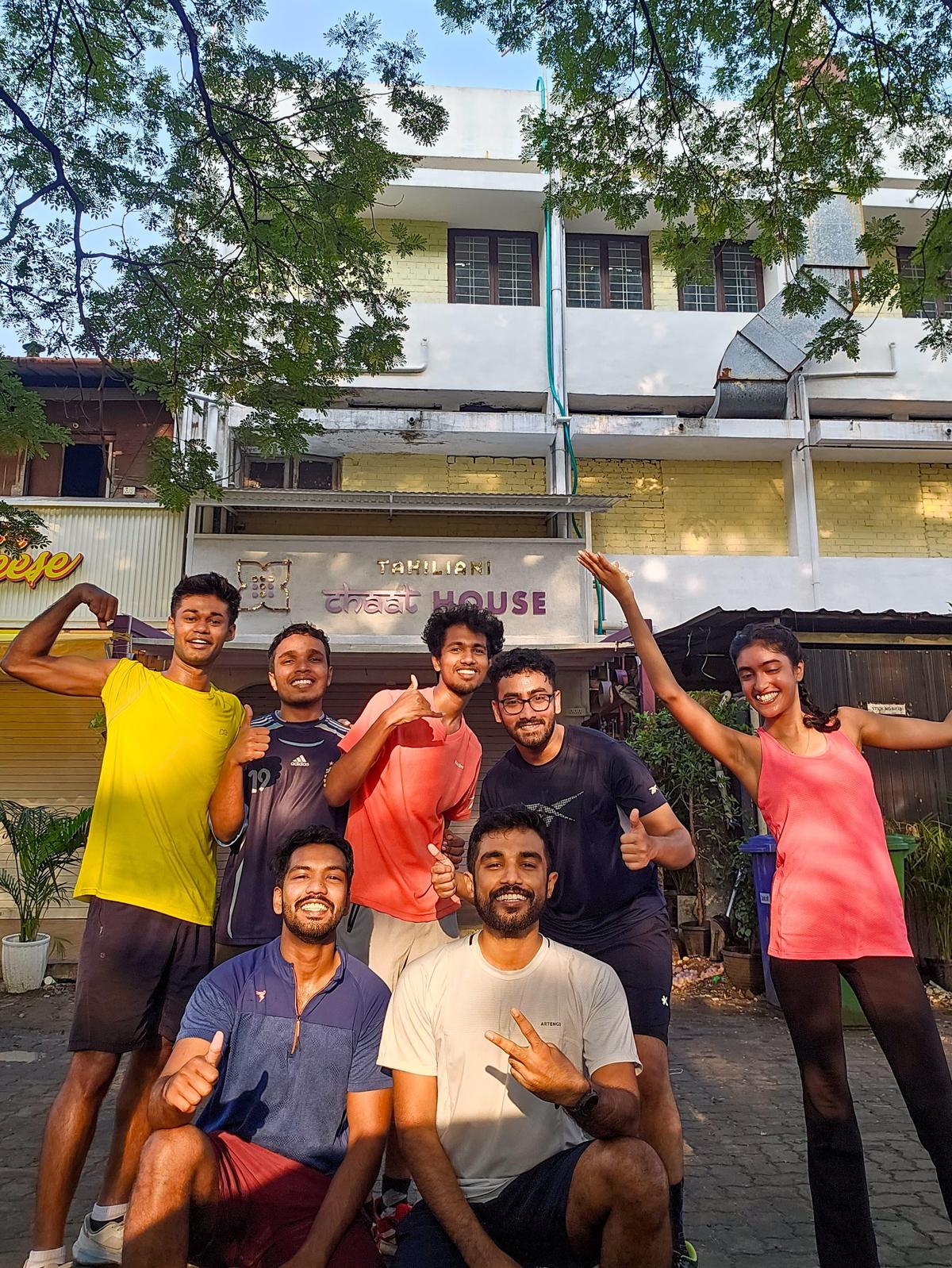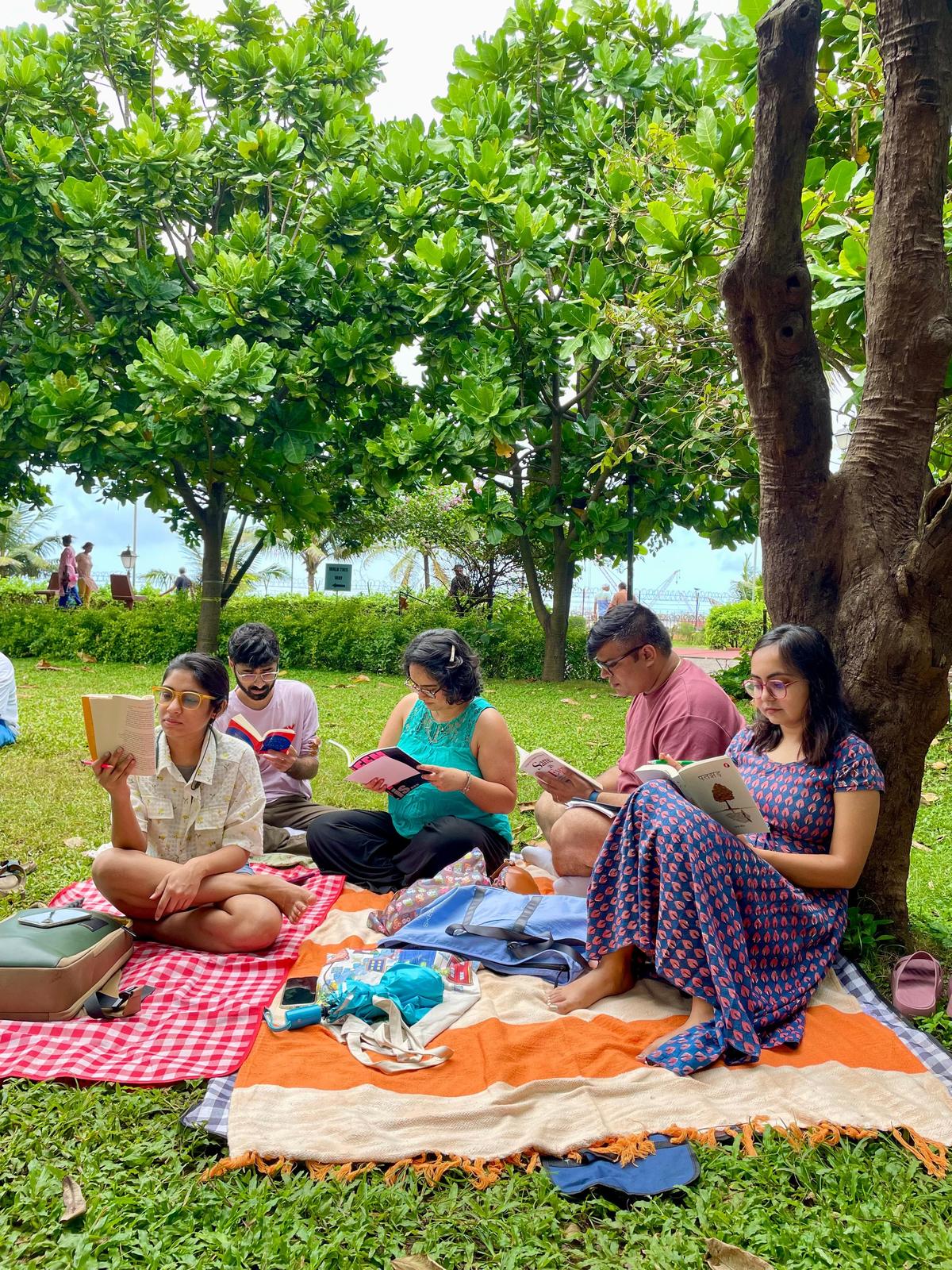On weekdays, Shahnil Samantara and Manraj Singh work as a product manager and software engineer, respectively. But on Sundays, they compete in marathons with members of the running club they co-founded last year. Running has been a long-time hobby for both but it was only last June that Samantara, 26, and Singh, 27, decided to build a community in New Delhi around their shared passion.
“I’d make plenty of WhatsApp groups with different friend circles seeking fellow runners, but nobody would come except Manraj. So we started the Delhi Run Collective with the aim of getting people of all ages together, and gaining the motivation and company to go running as well,” says Samantara, who catches up with us on a sweltering Sunday morning. It is 7 a.m. and he is warming up for his weekly ritual with the Collective in South Delhi’s Sanjay Van park. About 35 people, from software engineers to Army personnel to journalists and more, have turned up. Some have mutual friends, others are complete strangers to one another. At least four of the people I spoke to were first-timers, while two were professional marathon runners.
The Delhi Run Collective (DRC) is one among at least 15 formal running clubs that have come up across Delhi, Mumbai and Bengaluru alone after the COVID-19 pandemic. And it’s not just running clubs. There’s an overall uptick in activities designed to forge community, and foster a larger culture of wellness amongst a generation usually associated with labels such as ‘brainrot’ and ‘doomscrolling’.
The Delhi Run Collective meets every Sunday to run in a different park in the capital.
| Photo Credit:
Sushil Kumar Verma
As per a 2021 global survey by market research and consulting firm Ipsos, four out of 10 urban Indians reported feeling lonely and friendless at most times, especially after the COVID-19 pandemic. Urban isolation is notable in metropolitan cities such as Mumbai, where about 18% respondents reported feeling isolated “always”, and 37% “often”. The issue came into the spotlight in 2023, when the World Health Organization declared loneliness a pressing global health threat. Its health impact has been likened to smoking 15 cigarettes a day, or a feeling of hunger or thirst “the body sends us when something we need for survival is missing”. What does this have to do with the rise of third places?
In his 1989 book The Great Good Place, sociologist Ray Oldenburg first introduces the concept of a “third place” or third space as an informal gathering place that serves as “anchors of community life”. The disappearance of “addas” (loitering spots near chai stalls), public parks, and other community spaces that once served as outlets to meet people and exchange conversation and ideas, is increasingly evident at a time when interactions and exchange of ideas are mediated online rather than in-person. That is where initiatives like running clubs and pickleball groups are stepping in to offer a solution to the loneliness epidemic.
Mumbai-based Aayushi Pathak agrees. The 20-year-old student of Commerce recently started ‘Hobby Hoarders’ as one such community for young girls and women — strangers to each other — to meet up and engage in activities such as “junk journaling” together, making postcards and bookmarks, crocheting and more.

The ‘Hobby Hoarders’ meet up on Silver Beach in Mumbai’s Juhu area.
“People really craved a girls-only community. Where they can share ideas and engage in hobbies without the pressure of perfectionism,” she says. The meet-ups take place at a pre-booked venue, anywhere between Andheri and Bandra, with the participants paying a fee to cover the costs, says Pathak. She hopes to expand the community and organise gatherings in other cities soon, since the group also has members from Delhi, Hyderabad and Bengaluru.
Initiatives such as the Open Collective and No Agenda Space in Bengaluru by Indiranagar resident Meghna Chaudhury have also caught on to this idea, with attempts to envision a space for strangers to meet up, work or simply do nothing.

Safety and community
“We had a huge social circle but realised we didn’t know anybody in our neighbourhood when we moved to our new home in Panchsheel Park. I’d keep wondering, if the house catches on fire tomorrow, who would we call? Pickleball is what changed that,” says 37-year-old Delhi resident Ekta Marwaha, who works as a business development head at a hydroponics farm.
To Marwaha, the game — which combines elements of tennis, badminton and ping pong, and is seeing a surge of popularity thanks to social media — hasn’t just opened up new networking opportunities at work, but also connected her to her neighbours. “Our resident WhatsApp groups have over 1,000 women, of which 15 ended up joining an alternative WhatsApp group last year. We started with playing badminton before switching to pickleball.” The women now frequent each other’s homes, and many have also visited the farm Marwaha works at, to buy plants. She now wishes to open a pickleball court of her own.
And it’s not just about networking. Safety is a huge concern for many women when they go out in public, and joining activity-based groups often gives them the courage to do that. “A lot of women who are very interested in running have come to me saying that the lack of safety was the only thing holding them back,” says 40-year-old Swetha Subbiah, co-founder of Sisters in Sweat, a sports and wellness-based community. What started off as a WhatsApp group with a few women in 2018 is today a thriving community of 10,000 women across four cities — Bengaluru, Mumbai, Delhi and Hyderabad.

Swetha Subbiah (left), co-founder of Sisters in Sweat, a sports and wellness-based community.
Sisters in Sweat offers a range of sporting activities, from football to paddle to swimming. But for most women, in their 20s and 30s, who join the group, the primary motivation is the search for a community, says Subbiah. “Today, we see a lot of people leaving their hometowns for a job. A simpler way to meet a group of people with common interests is through such communities. In a team activity, when you engage with others, the bonding experience can be very therapeutic,” she adds.
Booking a pickleball court in Delhi, for instance, costs anywhere between ₹800 and ₹1,200 (or more) for an hourly session. For many working professionals, it’s also a chance at networking informally and building connections.
Tier-2 India is catching up
For Bhopal-based lawyer Arshad Hussain, playing pickleball twice or thrice a week has not only helped him make new friendships, but also created a sense of community. “I felt lonely when I returned home after studying law in Odisha. I had lost touch with my old acquaintances or I didn’t want to stay connected, in some cases. The absence of a community affected me greatly, but that has now changed,” he says.
Kochi-based Sachin Kuruttukulam observes how the trend of ‘out-migration’ further isolates many youngsters. He says, “Once you graduate from college, your entire friends circle might just move to different cities. There is a lot of migration happening out of Kerala to cities such as Bengaluru or even abroad.”
Drawing inspiration from ‘Run for a cause’-style events organised by local parks across the U.S. and Europe, he decided to team up with three of his friends to start the Kochi Run Club last August. A group of 15-odd individuals, most of them in their 20s, meets up every Saturday evening in Panampilly Nagar, Central Kochi, to begin their trail. After the run, the group stays back to have coffee or dinner. “There is this general trend towards community-driven groups even in tier-2 and tier-3 cities,” acknowledges the 28-year-old strategy manager.

Members of the Kochi Run Club before their weekend run.
Creating meaningful relationships
Studies indicate that ‘face-to-face’ interactions have been falling for quite some time now. Analysis of time-use data from the United States, Britain, and Australia between 1995 and 2021 shows a steady, uniform decline in face-to-face communication, beginning well before the widespread adoption of social media.
Manoj Sharma, who heads the SHUT Clinic at NIMHANS, Bengaluru, agrees that online communication has increased. “Online platforms allow communication without inhibitions — whatever one says is met with some form of validation or acknowledgement. AI-based validation is also an emerging issue,” he says. “Due to loneliness, people might turn to chatbots to discuss or present how they are feeling and simulate validation. If this becomes repetitive or predominant, people start losing out on offline opportunities to connect.”

A public reading club in Mumbai
Dr. Sharma acknowledges that today’s youth is highly self-aware. “Young adults recognise this ‘digital burnout’ which happens as a result of professional or recreational use of the web. They are conscious and want to work on it,” he says. He sees the potential of group-based sports or activity classes in promoting ‘digital fasting’ or ‘screen-free periods’. It goes beyond that, however, to provide feelings of ‘acknowledgement and affiliation’ and the joy of working towards ‘cohesive goals’ as a group — all of which lead to a ‘dopamine high’, something that is often sought out by users online.
Activity-based communities are “definitely more than just a moment in time”, says Subbaiah of Sisters in Sweat. “While awareness of health and wellness was sparked because of the COVID-19 pandemic in many ways, it’s a shift that is going to be sustained.”
Bhopal lawyer Hussain’s trajectory, for instance, reflects this larger movement towards new forms of community, and friendships. “I started going out for dinners or coffees with the people I played pickleball with. It’s really wholesome, because these people have also turned into cheerleaders and a support system for me. An absence of community here had once made me question my self-worth and identity. But, these new friendships have turned out to be enriching and fulfilling,” he says.
Gurmat is an independent journalist and researcher based in New Delhi. Gupta is an independent writer and social impact professional from Mumbai.
Published – April 25, 2025 11:30 am IST





